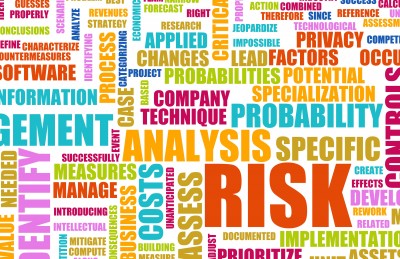Using Stock Data to Diminish Retirement Risks — Community Comment #1
 The 4% number has worked at every valuation level and sequence of returns which have happened in the U.S. stock market (#1 in the world)…. These SWR numbers are just rates that survived in the past, we don’t know that they were safe. U.S. stocks have had a relatively lucky sequence of returns in the past, even starting from periods of high valuations, other countries were not so lucky. It has not worked with sequences of returns from the #2 stock market (Japan) and #3 (U.K.) — Adrian2, Vanguard Diehards board, October 12, 2005
The 4% number has worked at every valuation level and sequence of returns which have happened in the U.S. stock market (#1 in the world)…. These SWR numbers are just rates that survived in the past, we don’t know that they were safe. U.S. stocks have had a relatively lucky sequence of returns in the past, even starting from periods of high valuations, other countries were not so lucky. It has not worked with sequences of returns from the #2 stock market (Japan) and #3 (U.K.) — Adrian2, Vanguard Diehards board, October 12, 2005
Using Stock Data to Diminish Retirement Risks — Community Comment #2
Since large negative returns early in retirement are so devastating, then a more conservative, less risky asset allocation should be used. More bonds, conservative stocks and maybe even significant cash or cash equivalents. — Larmewar, Vanguard Diehards board, 9-29-05
Using Stock Data to Diminish Retirement Risks — Community Comment #3
It seems that Dr. Bernstein is saying, although not with direct sentences but with the academic verbiage that he is good at, that 2% is probably the safest withdrawal rate, and 4% is looking for serious trouble. And it seems that Larry is saying 3% in that scenario. While most would say “it’s just a one percent difference, essentially they are saying the same thing”, the truth is that it’s actually a 50% difference in lifestyle and is a huge difference. Must I scrimp by living merely on 2% of my nest egg, adjusted for inflation each year, or can I take 50% more than that and whoop it up? — Daryll40, Vanguard Diehards board, August 14, 2005
Using Stock Data to Diminish Retirement Risks — Community Comment #4
For some reason, people expect to sustain the same withdrawal rate in the current return environment as they could in the 20th century return environment. Doesn’t make much sense to me. — Snarkl, Vanguard Diehards board, 07-21-05
Using Stock Date to Diminish Retirement Risks — Community Comment #5
It is obvious that Rob, in attempting to identify new SWR strategies and thus change from the “tried and true” long term average, ~4%, is goring your ox. If Rob improves on average SWR methodology, the implication is clear: You are all, metaphorically, out of business….If SWR’s weren’t such a potentially serious question, this discussion could be considered humorous. — Sirschnitz, Vanguard Diehards board, 11-16-05
Using Stock Data to Diminish Retirement Risks — Community Comment #6
 From the ashes of a decimated equity market. will rise an attractive equity risk premium. While waiting my portfolio is mostly Ibonds, TIPS, and less than 30% globally diversified equities. Hard to justify big equity risk for expected low equity returns. — Gadlfy888, Vanguard Diehards board, 07-21-05
From the ashes of a decimated equity market. will rise an attractive equity risk premium. While waiting my portfolio is mostly Ibonds, TIPS, and less than 30% globally diversified equities. Hard to justify big equity risk for expected low equity returns. — Gadlfy888, Vanguard Diehards board, 07-21-05
Using Data to Cope with Retirement Risks — Community Comment #7
The objective should be to achieve the flattest possible distribution of outcomes over the historical starting points. My preference would be to do this by using a lower allocation of stocks vs fixed, rather than a lower SWR (if possible). — karnkor53, Vanguard Diehards board, May 24, 2006.
Using Stock Data to Diminish Retirement Risks — Community Comment #8
Yes, I believe that one’s prospects for a safe retirement withdrawal rate are higher when equity valuations are at historical lows. — JohnYaker, Vanguard Diehards board, Vanguard Diehards board, August 31, 2006
Using Stock Data to Diminish Retirement Risks — Community Comment #9
The point is that, given any particular strategy where the resources supporting the withdrawal are affected by stock returns, the initial valuation at retirement has to have an effect on the outcome. An interesting perspective, however, is that the existence of high valuations at retirement may be what accounts for having a large nest egg in the first place vs. having a smaller nest egg and better prospects for growth in the future. It could be a wash over a total lifetime in terms of end-result standard of living. — Dbredmond, Vanguard Diehards board, December 17, 2006
Using Stock Data to Diminish Retirement Risks — Community Comment #10
What I take from this is that, since there have been only a few historical sequences starting with high PE ratios, maybe the fact that these did survive with 4% withdrawal rates doesn’t mean very much. Maybe they were lucky sequences. If this is what you are saying, I wholeheartedly concur. — MacDuff, SWR Research Group board, June 19, 2003
Using Stock Data to Diminish Retirement Risks — Community Comment #11
Remember that such studies treat any portfolio which merely “survives” as being successful. Think about what this means. It means that a portfolio (and in fact the entire safe withdrawal methodology) is successful if it declines 50%, 75%, 90% or even 99.44%, if it subsequently recovers. Question is . . . will it have a chance? It would be a rare person indeed who can can stick with a methodology that periodically exposes the savings of a lifetime (upon which he depends for his very survival) to such erosion. IMO it is unreasonable to make such as assumption. I don’t know anyone who could do this. I know I couldn’t. But when you accept the results of such studies, by definition, you are agreeing to such an assumption. It’s nonsense.” — FoolMeOnce, Motley Fool boards, November 23, 2004
Using Stock Data to Diminish Retirement Risks — Community Comment #12

The last 10-13 years have been a clinic in investor psychology. I just was chatting with someone offline who asked why I didn’t go for the 4% from reputable sources stuff in 2000, that hocus references above. I had a lot of answers, logical stuff, but i ended with the fact that I’m not a joiner and that I was pessimistic and that the frequent refrain of “can I take out 4% from my all-time high value since it doesn’t really matter where i start, right?” and the 15%-20% p.a. ‘birthright’ were earmarks of “regression”. I noted that all my overarching reasons appeared to be personality/psychological explanations for my behavior. Smell test, hunches approach. I guess, at some level, there was probably some experiential reason for many of my investing behaviors (auditing makes you pessimistic – you exist because people steal, you see people at their greediest). — Wanderer, SWR Research Group, August 28, 2003.
Using Data to Cope with Retirement Risks — Community Comment #13
What is the alternative? Ignore valuations, cross our collective fingers and hope? Year 2000 retirees did just this, ignored P/E over 40 and look how that turned out! Ignorance is not bliss when it comes to market values. Should retirees kid themselves about what is possible on the traditional 60/40 S&P 500/US bond index mix? Just retire anyway? Surely it is better to understand the situation ahead of time, consider saving more and work longer? Better that than suffering crushing portfolio losses from a reversion to the mean and be forced back to the workforce at reduced pay having left your job before you could really afford it.
No problems here, just tired of seeing rearview mirror people posting that 4% is safe when it ain’t. It seems people are happy to use past returns as an indicator for the future, but not past valuations that went with past returns as an indicator of anything. This is a rather selective & blinkered view, and unrealistic. — PeteyPerson, Early Retirement Forum, March 26, 2005.
Using Stock Data to Diminish Retirement Risks — Community Comment #14
Petey, your points are well taken. Future market returns may, or may not look much like the past. This view is not overly popular here because it rains on many of the people lining up to march in the early retirement parade, myself included…. My concern applies mainly to young early retirees with marginal resources. IMO It’s a disservice to encourage such individuals to “pull the plug” as soon as FIRECalc says they are 95% safe or whatever. — Roc, Early Retirement Forum, March 26, 2005.
Using Stock Data to Diminish Retirement Risks — Community Comment #15
Some SWR discussions are being held by people who are already in the belly of the whale but just don’t know it yet. — Mikey, March 26, 2005.
Using Stock Data to Diminish Retirement Risks — Community Comment #16
FIRECalc et al are historical simulations with no claims about the future. — BigMoneyJim, RetireEarlyHomePage.com board, June 24, 2006
Using Stock Data to Diminish Retirement Risks — Community Comment #17
Greaney (the reference is to an author of an Old School SWR study) did his thing based upon historical market action. Yes, he stated that it was the past, but he proceeded to put out the number as relevant to today. Much discussion and planning were done based upon that number. — Earnabuck, Vanguard Diehards board, June 24, 2006
Using Stock Data to Diminish Retirement Risks — Community Comment #18
 We know intuitively that 6.21% runs a high risk of failure going forward. If we accept that, then we must also accept that 4.21% in 2000 runs a high risk of failure. It seems to me that anything exceeding dividend yield (plus around 1% or so) is automatically suspect. — Bob Smith, March 28, 2004
We know intuitively that 6.21% runs a high risk of failure going forward. If we accept that, then we must also accept that 4.21% in 2000 runs a high risk of failure. It seems to me that anything exceeding dividend yield (plus around 1% or so) is automatically suspect. — Bob Smith, March 28, 2004
Using Stock Data to Diminish Retirement Risks — Community Comment #19
The odds of repeating that sequence (or any other specific sequence) are about 1 in a billion. If we get a different sequence, even without a catastrophic event like the Great Depression, all bets are off. All it would take is a streak of bad luck to blow the SWR assumptions out of the water. — Wabmester, March 30, 2004
Using Stock Data to Diminish Retirement Risks — Community Comment #20
The predicted annualized real return for 30 years is about 3%. This was when the S&P yield was somewhat higher than it is today. Hence today’s predicted yield would be less. How can an SWR be greater than the average annual return? Only one way — one is helped, rather than hurt, by statistical variability. Yet the whole purpose of SWR was to demonstrate the folly of Fidelity’s silver haired guru telling us that we could withdraw whatever the real market return was. Variability tends to be our enemy, not our friend. — Mikey, Early Retirement Forum, March 23, 2004
Using Stock Data to Diminish Retirement Risks — Community Comment #21
All of these calculators are tools and we should be cautious enough to use them and interpret their results into our own situation. It is essential to know how they work and what they are based on. A discussion of possible limitations or other interpretations does not seem in any way out of line to me. Thanks to those who created FIRECALC and and to those who wish to provide an alternative viewpoint or calculator. — Bruce1, Early Retirement Forum, August 14, 2004
Using Stock Data to Diminish Retirement Risks — Community Comment #22
There is an overwhelming tendency to reify the SWR concept. — Bill Sholar (author of the FIRECalc calculator, an Old School SWR calculator), March 29, 2004
Using Stock Data to Diminish Retirement Risks — Community Comment #23
Remember that Templeton made that statement (“The most dangerous words in the investment business are, ‘this time it’s different'”) to express that valuation does matter. He was agreeing with hocus and the pessimists here. — Bongo, Early Retirement Forum, May 27, 2004
Using Stock Data to Diminish Retirement Risks — Community Comment #24
I’ve finally gotten around to calculating the 2004 year-end balance of the portfolio of a hypothetical investor who retired at the end of 1999 with a 75:25 mix of S&P500 stocks and 6 mo. commercial paper. This was the type of portfolio that was being touted as “100% safe” on some investment boards based on historical backtesting at the time. The following numbers assume a 0.2%/yr. expense ratio, 4%/yr. withdrawal, and are stated in constant (real) dollar amounts….
It’s clear that this person would be in real trouble, particularly if he is an early retiree with possibly 30-50 years of life remaining. He would be taking withdrawals of about 6.4% at the start of 2005 because of the severe hit that the portfolio has taken. Using Monte Carlo analysis this portfolio would have a greater than 50:50 chance of failure during the next 40 years if you assume that returns will be as good as in the past. Using Gordon equation predictions, the chance of failure is about 80%.– Raddr, Raddr-Pages.com board, May 22, 2005
Using Stock Data to Diminish Retirement Risks — Community Comment #25
 Very interesting and scary analysis. I imagine if one did something like the Trinity study in 1965, the 100% safe withdrawal rate would be higher than 4%. (I guess we can calculate the SWR to 1965, I haven’t). Then, a 1965 or 1973 retiree using that maximum SWR would have run out of money. I think the same might be true for 1999/2000, only more so. Year-end 1999 might turn out to have been worse than any point in history to retire on an S&P500/shortbond portfolio. I agree that the hypothetical retiree is in trouble, and may easily run out of money in the years or decades ahead. — LazyDay, Raddr-Pages.com board, March 22, 2005
Very interesting and scary analysis. I imagine if one did something like the Trinity study in 1965, the 100% safe withdrawal rate would be higher than 4%. (I guess we can calculate the SWR to 1965, I haven’t). Then, a 1965 or 1973 retiree using that maximum SWR would have run out of money. I think the same might be true for 1999/2000, only more so. Year-end 1999 might turn out to have been worse than any point in history to retire on an S&P500/shortbond portfolio. I agree that the hypothetical retiree is in trouble, and may easily run out of money in the years or decades ahead. — LazyDay, Raddr-Pages.com board, March 22, 2005
Using Stock Data to Diminish Retirement Risks — Community Comment #26
I’ve tended to be skeptical of the view that, in a bear market, one could cut down to a barebones budget, say 2% or 2.5% SWR, for a couple of years and then go back to, say, the 4% SWR – the difference between 4% and 2.5% of 1.5% is small relative to 25% or so falls in portfolio value and an extended period of several years of low portfolio values would probably result in years and years of uncomfortable barebones living. — KenM, Raddr-Pages.com, February 6, 2006
Using Stock Data to Diminish Retirement Risks — Community Comment #27
Some time ago I posted a poll over at the Motley Fool board that was designed to gauge how many people started retirement during the record valuations of the 2000 bubble…. A surprisingly high percentage of respondents retired during that time. I suspect that the record valuations contributed directly to this phenomenon. That is, people with high stock allocations through the 90s benefitted from the bubble and found themselves with enough net worth to retire. — BenSolar, FIRE board, June 19, 2003
Using Stock Data to Diminish Retirement Risks — Community Comment #28
I assume you’re unlikely to get very much feedback from them – in that position I wouldn’t want to talk about it – too painful. — KenM, FIRE board, June 22, 2003
Using Stock Data to Diminish Retirement Risks — Community Comment #29
There is a strong foundation of logic and statistics that valuation directly affects long-term stock market returns, and thus directly affects the long-term withdrawal rate achievable from a stock-heavy portfolio. — BenSolar, FIRE board, June 4, 2003
Using Stock Data to Diminish Retirement Risks — Community Comment #30
I think fundamentally he [the reference here is to William Bernstein] believes the return on equity will be 3% in the future. This does indeed have an impact on SWR, if he is correct. If he is correct, the ~2.2% yield on TIPS start to look good again. That is a 0.8% equity premium before expenses. — Oliver, FIRE board, May 31, 2003.
Using Stock Data to Diminish Retirement Risks — Community Comment #31
I submit that a 75% stock allocation that is optimal for one year, cannot possibly be optimal for other years unless the market dynamics are the same for every year, which they patently are not…. It’s only because I was reasonably well-heeled, and backed away from that allocation that I’m still retired. — MHTyler, FIRE board, January 20, 2003
Using Stock Data to Diminish Retirement Risks — Community Comment #32
The 100% safe SWR going forward is one where there is no possibility of going broke within the time-frame selected. One way to create such a portfolio would be to use nothing but bonds, specifically TIPS. For a 30 year portfolio, constructed of only TIPS, there is no inflation risk, no deflation risk, no reinvestment risk, etc…..
Adding other investments increases the potential rewards as well as the potential risks, IMHO. For the risk averse, perhaps one approach to retirement planning could be to have one portfolio which is 100% safe, the all TIPS portfolio, which pays for the bare-bones budget, and a second portfolio might be 100% equities, for growth. — nnn12345, Motley Fool board, December 31, 2002
Using Stock Data to Diminish Retirement Risks — Community Comment #33
 I examined the effects of a stock switching strategy similar to the one described by hocus. My conclusion: history backs hocus up, his valuation based switching strategy…worked in the past, and in fact beat the static ‘optimal allocation’. Hocus is the only person I know (if only via message boards) who has completely opted out of participation in the stock market bubble. And you know what? He has benefited immensely from doing so. — BenSolar, Motley Fool board, May 1, 2003
I examined the effects of a stock switching strategy similar to the one described by hocus. My conclusion: history backs hocus up, his valuation based switching strategy…worked in the past, and in fact beat the static ‘optimal allocation’. Hocus is the only person I know (if only via message boards) who has completely opted out of participation in the stock market bubble. And you know what? He has benefited immensely from doing so. — BenSolar, Motley Fool board, May 1, 2003
Using Stock Data to Diminish Retirement Risks — Community Comment #34
What counts is not where the hyper-emtional Mr. Market happens to value your portfolio on a given date, but the underlying long-term earning power of your shares in the companies represented in that portfolio…. To me, a useful way to think about this problem is to focus on the sustainable cash generated by the portfolio. Imagine that one is going to live on a private business….Would the amount of cash you could take out have anything to do with what valuation was put on the business? — Mikey, Early Retirement Forum, October 8, 2003
Using Stock Data to Diminish Retirement Risks — Community Comment #35
Another significant variable in the SWR equation has to do with the makeup of the portfolio. The individual with 70% in TIPS and 30% in stocks can be far more certain about his/her SWR than the person with 30% TIPS and 70% stocks, for example. — Bob Smith, Early Retirement Forum, October 8, 2003
Using Stock Data to Diminish Retirement Risks — Community Comment #36
You have to understand that there is always a chance that your portfolio will be depleted, and once it has fallen in value by 30-50%, then that chance is going to be much greater than it was when you started. In the 130 years of history the stock market has always rallied strongly off of 30%+ drops — are you going to count on a rally like that this time? — Bongo2, Early Retirement Forum, October 8, 2003
Using Stock Data to Diminish Retirement Risks — Community Comment #37
The system of using the worst-case historical SWR to set your future SWR would have failed about 20% of the time in actual history. For example, if you retired in 1929, 1930, or 1931, the worst-case historical SWR known in these years would have been 5.3% (using my inputs of 70/30 equity/comm. paper, etc.) which occurred in the period starting in 1893.
The 5.3% “Historically Safe SWR” would have actually proved unsafe for these three periods. You would not have known about the worst-case SWR that started in ’29 since that period didn’t end until 1959. A 1959 retiree would have picked 4.4%, which was a new minimum and would have been “safe” for his/her 30 year payout period. However, the HSWR would have, again, proven itself unsafe for anyone retiring in years starting 1964, ’65 and ’66, who would have also picked 4.4%. — Biggalloot, Motley Fool boards, February 12, 2003
Using Stock Data to Diminish Retirement Risks — Community Comment #38
My plan was to follow the basic approach as discussed on the Retire Early board here on Motley Fool; ie, to set aside three (to five) years of expenses in cash and bonds and put the rest in equities (S&P 500). This plan would have worked well except for the severity of the bear market. I had not counted on three years of decline which consumed all my cash and left me with less than a third of the portfolio I started with.
I have developed a deep understanding of why my father (who lived through the Great Depression) was so timid about investing in stocks. He would only buy blue chips that paid dividends. I really understand that thinking now.
 I also now truly understand the reason that volatility is equated with risk. Until you are withdrawing from a portfolio for your daily needs, volatility seems a non-issue….In fact, I am working at a part time job to minimize the impact as much as possible.
I also now truly understand the reason that volatility is equated with risk. Until you are withdrawing from a portfolio for your daily needs, volatility seems a non-issue….In fact, I am working at a part time job to minimize the impact as much as possible.
I have a much stronger respect for dividends. Dividends greatly reduce the volatility of the portfolio, and they are a repeating indication that the company is financially sound. As a retiree, dividends are psychologically soothing…
Needless to say, this bear market has had a profound affect on me, and I will never again view things with the statistical trust that I once did. — RKMcDonald, Motley Fool boards, December 6, 2002
Using Stock Data to Diminish Retirement Risks — Community Comment #39
I retired in August of 2000, and a few months before, based on advice from the Motley Fool board, I dumped directly into a market at DOW 10,500. I lost about 20%, and the reason I didn’t lose another 10% was because I broke all the rules and got the hell out…. Benjamin Graham recommends a mix of roughly 50% securities to fixed in retirement, but possibly as little as 25% in hard times. His perspective seems to be that although greater than 50% might have a higher return, its volatility is counter productive to the entire point of retirement, which is safely and security. — MHTyler, FIRE board, December 25, 2002
Using Stock Data to Diminish Retirement Risks — Community Comment #40
There are limitations to what those studies [the reference here is to the Old School SWR studies] can do for us, I think we need to recognize that and try to accomplish something beyond if it possible.
This is of more than mere academic interest to me as I am one of those who retired in 2000 not too far off from the market peak. If there’s a strong possibility that a 4 percent withdrawal rate isn’t going to cut it for me, due to record-high stock valuations when I retired, then I need to deal with that as early as possible by studying everything I can on the matter and coming up with a “Plan B” for my own life while I still have substantial assets (Should I take on part-time work? Should I move to a cheaper country, maybe one that offers low- or no-cost health care?, etc., etc.). My fear is just sitting back, putting blind faith in the SWR studies, only to find myself broke 15-20 years from now (or whenever). — Andrew61, Motley Fool board, December 11, 2002
Using Historical Data to Diminish Retirement Risks — Community Comment #41
 The Great SWR Debate is over. Hocus has won. The technical evidence supporting this assertion is rock solid. There is plenty of credit to spread around. –John Walter Russell, Safe Withdrawal Rate Research Group board, August 3, 2003
The Great SWR Debate is over. Hocus has won. The technical evidence supporting this assertion is rock solid. There is plenty of credit to spread around. –John Walter Russell, Safe Withdrawal Rate Research Group board, August 3, 2003
Using Historical Data to Diminish Retirement Risks — Community Comment #42
I am afraid that Emperor SWR has no clothes. — Mikey, Early Retirement Forum, October 8, 2003
